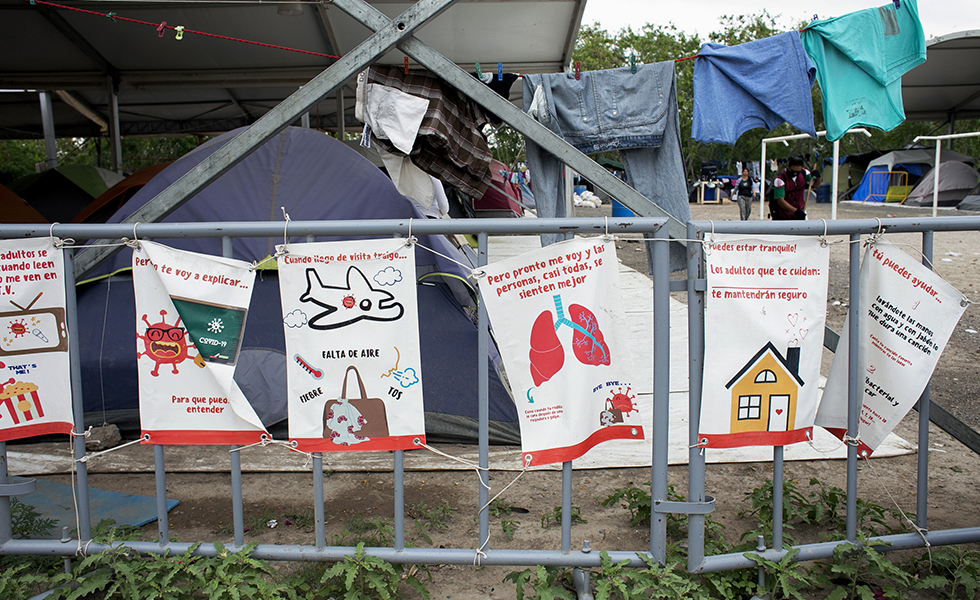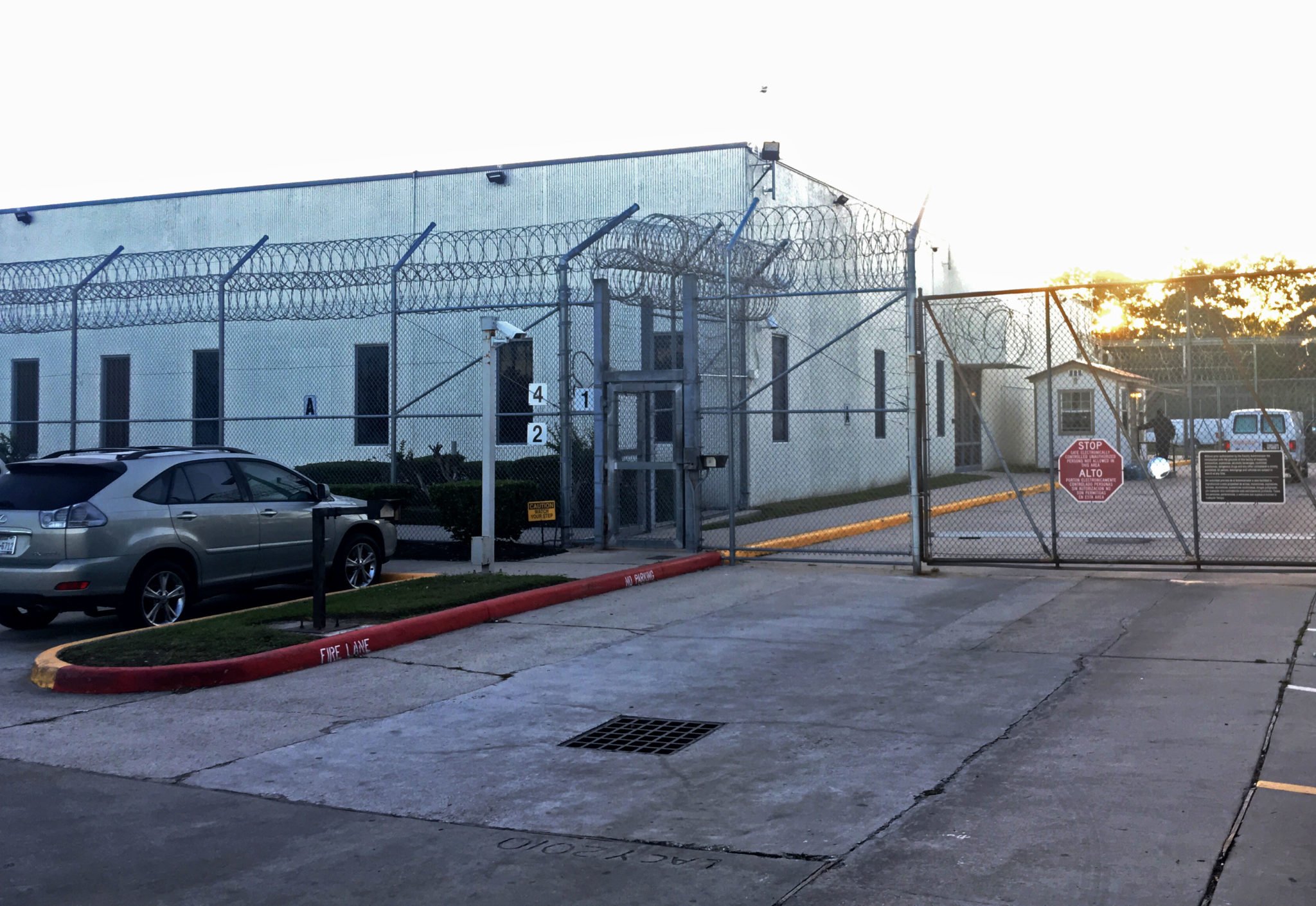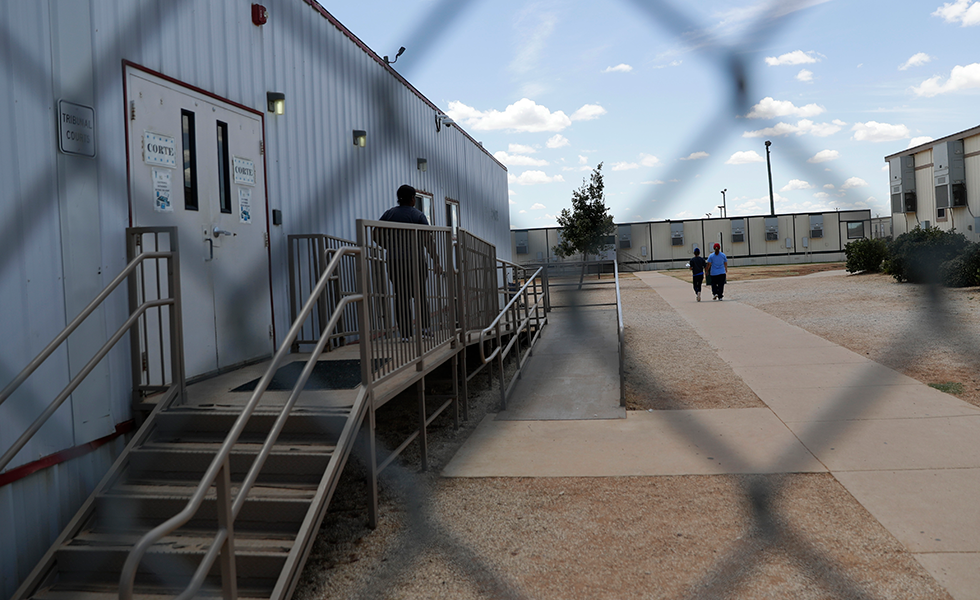
Field Hospital Begins Construction in Matamoros Migrant Camp in Response to COVID-19
As cases in Mexico begin to surge and U.S. immigration offices remain closed, medical aid volunteers at a Matamoros migrant camp prepare for the worst while hoping for the best.
A 20-bed field hospital at a migrant camp near Matamoros has been approved for setup by American and Mexican officials after weeks of negotiating permission requests from Global Response Management (GRM), the medical aid organization that spearheaded the effort. The hospital plans to begin receiving patients on May 1.
GRM first proposed the field hospital at the beginning of March, when it began to plan for the impending coronavirus pandemic. Andrea Leiner, a nurse practitioner and the director of strategic planning for GRM, said the organization knew it was a question of when, and not if, the virus would arrive in the camp. “There is nothing to indicate that it won’t become a problem,” Leiner told the Observer.
Since October, the organization has been providing medical aid to the nearly 2,000 migrants waiting at the foot of the Gateway International Bridge in Matamoros. Most of the camp’s residents have traveled to the U.S. port of entry in hopes of seeking asylum in the U.S. or are waiting in Mexico under the Migrant Protection Protocols (MPP) for their immigration cases to be heard in U.S. courts. After the camp began growing quickly last fall, GRM began to coordinate with other U.S. and Mexican aid organizations and volunteers, including Team Brownsville, Angry Tias and Abuelas of the RGV, and Resource Center Matamoros, as well as local religious leaders, to pool resources to serve the needs of the migrants in the makeshift encampment on the Rio Grande riverbed. When local officials told GRM that Matamoros had only 10 respirators in its hospitals and emergency rooms in the area would begin to admit only life-threatening emergencies, GRM began to make its own emergency management plans for the camp.
When GRM presented a proposal for the field hospital to the other aid organizations with which it regularly coordinates, fundraising for the $500,000 estimated cost was swiftly met. Andrea Rudnik, co-founder of Team Brownsville, said her organization was one of several that donated a large portion of its resources toward the sum, to which private donors also contributed. “We wanted to support their effort because they are an extension of everything that we do,” Rudnik told the Observer. “Our main mission is to take care of people in the encampment. If their medical needs are not met—that is a huge part of being taken care of, is having your medical needs met.”
The plan was to set up two large tents with 10 beds each in which moderately ill patients could be stabilized before their situation got worse. The money was used to purchase medications from the local pharmacy as well as medical supplies, including personal protective equipment, X-ray machines, heart monitors, and oxygen concentrators. Through a partnership with Footprint Power, GRM was able to bring a solar trailer in to power the equipment.
However, after the field hospital was set to be constructed during the first week of April, GRM encountered its most difficult hurdle: obtaining the permissions necessary from both countries to cross and set up medical equipment along the border. For weeks, GRM’s leaders worked with U.S. officials and representatives from every level of the Mexican government. Impatiently, the volunteers waited for a final decision. “We are all action people and we are all problem solvers,” Leiner said.
Finally, late last week the permissions that Leiner said are essential from GRM’s government partners came through and the structure was approved for six months. Then, the work began.
Since Friday, volunteers from GRM have been working around the clock in temperatures well above 90 degrees. So far, Leiner said the outer structure is nearly complete and setup for the inside of the hospital will take another couple of days. It’s estimated that the field hospital can begin to serve people by the end of the week. The rest of the time, Leiner said, GRM plans to prepare for a worst-case-scenario outbreak, with the underlying hope that this won’t be the case. Currently, there are no confirmed COVID-19 cases in the Matamoros camp, but there are several in the city of Maramoros.
Carolina Jimenez Sandoval, the adjunct director of investigations in the Americas for Amnesty International, said her organization is very worried about how COVID-19 will affect the migrant population because of their vulnerable conditions. Jimenez Sandoval told the Observer that the semi-closure of the border, combined with policies like MPP and U.S. Customs and Border Patrol’s coronavirus response, which encourages agents to immediately deport people who show up at ports of entry, has increased the vulnerability of the large mass of people who are congregating at the port of entry bridges. “This generates big challenges for the Mexican government, with a large number of people who have basically remained there because they are trapped, either waiting for their turn to seek asylum or for their cases to be heard in court,” Jimenez Sandoval said.
While Jimenez Sandoval said that the Mexican government accepted this responsibility when it signed on to MPP, she said that given the lack of sanitary conditions in the camps and the rapid spread of the coronavirus in Mexico, it is fundamental that local and federal officials work to create policies that pay attention to the migrant population. “Regardless of where they are in Mexico, it is important that they are included in the preventive and treatment policies,” Jimenez Sandoval said. “If the government is having hardships to have this happen, there is always humanitarian organizations that are willing to work with the government to help care for a population that is very vulnerable in the current context.”
Federal and local officials in Mexico did not respond to requests for comment on the field hospital.
Leiner said GRM currently has the medical equipment to care for moderately ill patients and has formed a partnership with a local hospital to transfer patients who need intensive care to its facility as needed. However, the organization is very aware of the possibility that the local ICUs could quickly become overwhelmed, so they must also prepare for that scenario.
To ensure round-the-clock care for future patients, GRM is taking medical volunteers and working with partner medical organizations in the U.S. and along the border to share information. While Leiner said they have received more applications in the past couple of weeks, GRM is a volunteer organization competing with bids for medical professionals across the U.S. (In New York, Leiner said bids for nurse practitioners ran upward of $13,000 per week.)
With the addition of the field hospital, she said volunteer aid and donations have become especially important, as GRM’s costs in Matamoros have ballooned from $20,000 per month to $200,000 per month. Nevertheless, GRM plans to see if it can set up similar projects along the border. “Treating people humanely on both sides, it is not just a frivolity,” Leiner said. “It has economic impact for both countries.”
Daniel Rosas of El Mañana de Nuevo Laredo contributed reporting.
Find all of our coronavirus coverage here.
Read more from the Observer:
-
Mi Barrio No Se Vende: San Antonio is planning to demolish its oldest and largest public housing project, threatening the future of a deeply historic neighborhood—one that anchors the city’s identity as the nation’s Mexican American capital.
-
From Jail to the Streets: One Texan’s Story During COVID-19: The homeless are 11 times more likely to be incarcerated than the rest of the population.
-
‘I’m in Limbo Here’: Texans Are Met with an Overwhelmed and Antiquated State Unemployment System: The safety net meant to support the second largest workforce in the country is using decades-old technology. The workforce agency was trying to replace it when the pandemic hit.


